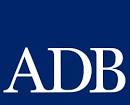Tokyo, Japan (BBN)- Emerging East Asia’s local currency bond markets are still expanding but risks to the outlook are rising given the prospects of tighter US monetary policy, slower economic growth in Asia, and persistent capital outflows, the Asian Development Bank (ADB) said on Thursday.
The ADB’s latest quarterly Asia Bond Monitor report also warns that most governments in the region have missed the opportunity to raise cheap funds to finance critical infrastructure spending. “That will be a further constraint on growth and poverty reduction going forward. ADB estimates that Asia needs to spend at least $8 trillion on infrastructure between 2010 and 2020 to sustain economic growth.”
“Asia’s bond markets – and its borrowers – are better placed to stand up to this latest round of global volatility than they were in 1997-1998 but tough times certainly lie ahead,” said Iwan J. Azis, Head of ADB’s Office of Regional Economic Integration. “The challenge will be to ensure the region can cope with higher borrowing costs and falling asset prices, which could hurt corporate balance sheets and dampen economic growth.”
At the end of June, there were $6.8 trillion in local currency bonds outstanding in emerging East Asia, which is comprised of the People’s Republic of China (PRC); Hong Kong, China; Indonesia; the Republic of Korea; Malaysia; the Philippines; Singapore; Thailand; and Viet Nam.
That was 1.7 percent more than at the end of March, but a slower growth rate than the 2.9 percent expansion seen in the first quarter of 2013 with investors now more cautious in the wake of the May announcement from the US Federal Reserve that it will soon start reducing its bond purchases.
Local currency bond issuance also continued in emerging East Asia, but still at a slow pace as some borrowers held back in the face of higher funding costs around the region, according to the report.
There were $827 billion in new bonds sold between April and June, 4.0 percent more than in January through March, largely thanks to a 26.8 percent increase in issuance by central governments and agencies. Corporate issuance slumped 20.1 percent quarter-on-quarter to $168 billion as new bond sales by PRC companies tumbled 48.8 percent. Excluding the PRC, corporate issuance ticked up 1.4 percent.
The report also said turmoil in the global financial markets has also made it harder and more expensive for emerging East Asian companies, particularly lower-rated firms, to borrow in the key foreign currencies – US dollars, euros, or yen. After $81 billion in issuance in the first five months of 2013, June and July saw a total of just $7.5 billion raised.
Compared with 1997-1998 when Asia suffered a financial crisis, governments and companies now hold more of their debt in local rather than foreign currency and the debt is now longer-dated than it was, meaning they are less vulnerable to currency depreciation and sudden shifts in borrowing costs and investor appetite.
“To build resilience and support growth, the region needs to continue to develop more stable sources of funding, including more foreign direct investment, which tends to be more stable than capital market investment, and encouraging a wider range of bond investors, including pension funds.”
The ADB also said insurance and pension fund investments, guarantees, and greater use of subordinated debt, alongside better project data, could also help channel more funds into transport, energy, telecommunications, and other infrastructure.
Market returns on Asian bonds have fallen sharply so far this year with the iBoxx Pan Asian Index falling 3.5 per cent in US dollar, unhedged terms. Losses were largest in Indonesia, down 17.8 per cent and Singapore, down 7.8 percent. Only the Philippines and the PRC markets saw gains of 7.5 percent and 3.1 percent respectively.
BBN/SSR/AD-26Sept13-11:04 am (BST)

